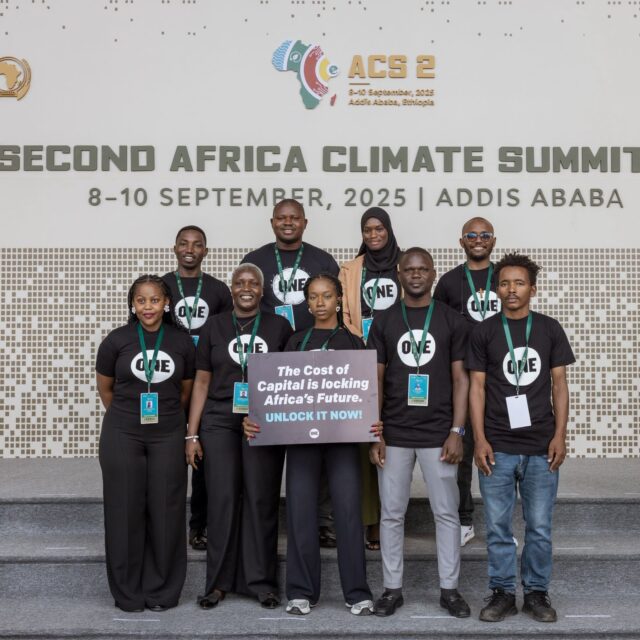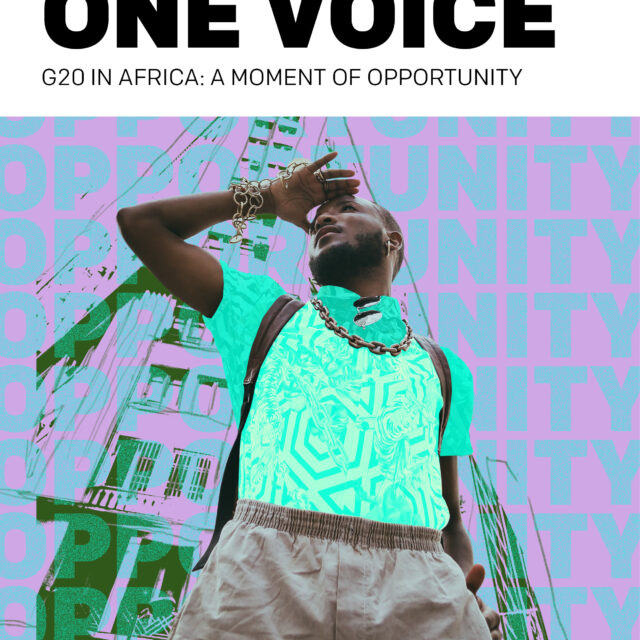By Yohana Matiko Isack, ONE Champion (Tanzania) and Dr. Tesfahun Terefe, ONE Champion (Ethiopia)
In September 2025, Addis Ababa became the beating heart of Africa’s climate conversation. From the Adwa Memorial Museum, where the Africa Youth Climate Assembly (AYCA) unfolded, to the grand halls of the International Convention Center hosting the Second Africa Climate Summit (ACS2), the message was clear: Africa may contribute the least global emissions, but it refuses to sit on the sidelines of climate action.
Youth setting the pace
Hundreds of young delegates from across the continent sharpened and adopted the AYCA 2025 Declaration, insisting on practical solutions, not platitudes. I (Yohana) pressed for one demand above all: Lowering the cost of capital. When interest rates, transaction fees and rigid credit assessments suffocate innovation, climate solutions die before they even reach communities. That is not just economics, it’s injustice.
Walking through pavilions from Kenya to Jacob’s Ladder Africa, I saw prototypes and pilot projects brimming with potential, waiting only for affordable finance to scale. Youth were not waiting for permission, but they were drafting Africa’s roadmap for green jobs, renewable energy and resilient food systems.
Summit outcomes
The ACS2 brought heads of state, negotiators and activists into the same space to hammer out commitments. Among the highlights was the reaffirmation of the Nairobi Declaration, adoption of the Addis Ababa Declaration and updated Nationally Determined Contributions (NDCs). Emerging economies pledged to accelerate renewable transitions namely solar, wind and hydro, while developed nations promised greater financial support. A new fund for smallholder farmers was launched, signaling recognition of the grassroots frontlines of climate resilience.
Yet the real test is not declarations but delivery. As Dr. Tesfahun observed, too many pledges risk stalling without adequate finance and collaboration. Geopolitical tensions, slow implementation and uneven resources remain barriers. Still, placing African youth at the center of Agenda 2063 and global negotiations from COP30 in Belém to the G20 is a step toward rewriting the narrative: Africa as a leader, not a victim.
Finance as survival
At ONE’s side event with Open Society and ACET, the African Development Fund (ADF) was spotlighted as a direct pipeline for locally led adaptation and innovation. Streamlined access, lower transaction costs and a stronger concessional window are not technical tweaks, they are lifelines. A fully funded ADF-17 and ensuring affordable borrowing across African economies could mean the difference between a solution stuck on a laptop and one that powers an entire village.
Even large-scale projects like the Grand Ethiopian Renaissance Dam (GERD) carry this lesson. The dam embodies Africa’s renewable ambition but also highlights the accountability needed to ensure benefits reach communities and regional grids. Infrastructure on its own is not enough, finance must be just, inclusive and long-term.
Looking Ahead
Leaving Addis, one truth was undeniable: Africa’s young people, farmers, scientists and entrepreneurs are already building the solutions. What they need is affordable capital, political will and delivery that matches rhetoric.
The cost of inaction and cost of capital are high. For Africa, the future depends on closing that gap.



